
Discover the Serenity of Baegak Valley
Explore Baegak Valley, a serene historical landmark in Seoul, where nature meets rich cultural heritage in a stunning landscape.
Nestled in the heart of Seoul, Baegak Valley offers tourists a perfect blend of nature and history. This peaceful retreat is not only a picturesque location but also a significant historical landmark that allows visitors to immerse themselves in the rich cultural heritage of South Korea. With stunning views and lush greenery, it’s an ideal spot for a serene journey away from the city's hustle and bustle.
A brief summary to Baegak Valley
- 부암동, Jongno District, Seoul, KR
Local tips
- Visit during early morning to enjoy the peaceful atmosphere and stunning sunrise views.
- Wear comfortable shoes as the trails can be rugged in certain areas.
- Bring a camera to capture the beautiful scenery and historical features.
- Check the weather beforehand to ensure a pleasant hiking experience.
- Consider visiting in the fall when the foliage is particularly breathtaking.
Getting There
-
Subway
Start by taking Line 3 (the Orange Line) from any station in Seoul. If you're near a transfer station, you can easily connect to Line 3. Ride the subway towards 'Daehwa' and get off at 'Gyeongbokgung Station' after 5 stops. Use Exit 2 to exit the station.
-
Walking
Once you exit Gyeongbokgung Station, walk straight for about 500 meters until you reach the main entrance of Gyeongbokgung Palace. Enjoy the view of the palace as you walk.
-
Walking
From Gyeongbokgung Palace, head northwest towards the Bukchon Hanok Village. Walk for about 300 meters until you reach the intersection with 'Samcheong-ro'.
-
Walking
At the intersection, turn right onto 'Samcheong-ro' and continue walking for about 600 meters until you see the entrance to Baegak Valley on your left. Look for signs indicating the valley entrance.
-
Walking
Once you see the entrance to Baegak Valley, walk in and enjoy the scenic trails and historical landmarks within the valley.
Discover more about Baegak Valley
Iconic landmarks you can’t miss
Sukjeongmun Gate
0.5 km
Explore the historical marvel of Sukjeongmun Gate in Seoul, a stunning representation of Korea's architectural heritage and rich history.

Chimnyugak House
1.3 km
Discover the historical beauty of Chimnyugak House, a tranquil gem in Seoul, where culture and nature harmoniously intertwine.
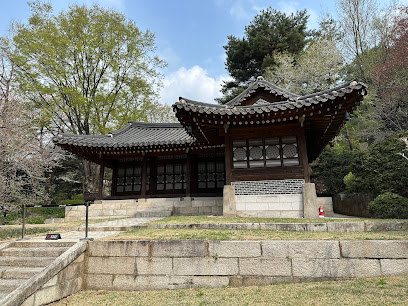
Sinmumun Gate
1.6 km
Explore the historic Sinmumun Gate, a majestic symbol of Seoul's rich heritage and architectural beauty, nestled in the heart of the city.

Jibokjae
1.6 km
Discover the elegance and history of Jibokjae, a royal guesthouse showcasing Korea's architectural beauty and cultural heritage.

Hongjimun Gate and Tangchundaeseong Fortress
1.8 km
Explore the historic Hongjimun Gate and Tangchundaeseong Fortress in Seoul, a captivating blend of architecture and history set in serene surroundings.

복정우물(Bokjeong Well)
1.8 km
Uncover the historical allure of Bokjeong Well, a serene landmark in the heart of Seoul that showcases the city's rich cultural heritage.

House of Go Huidong in Wonseo-dong
2.0 km
Explore the House of Go Huidong, a serene museum in Seoul showcasing Korea's cultural heritage and traditional architecture.

Jagyeongjeon
2.0 km
Explore the exquisite architecture and serene gardens of Jagyeongjeon, a royal landmark that embodies Korea's rich cultural heritage.

Bukchon Hanok Village
2.0 km
Discover the beauty of Bukchon Hanok Village, where traditional Korean architecture meets modern creativity in the heart of Seoul.

Gyeongbokgung Palace
2.1 km
Experience the grandeur of Gyeongbokgung Palace, a cultural landmark in Seoul that showcases Korea's rich history and breathtaking architecture.

Yeongyeongdang
2.1 km
Experience the rich history and serene beauty of Yeongyeongdang, a must-see historical landmark in the heart of Seoul's Jongno District.

Yeongchumun (West Gate)
2.2 km
Explore Yeongchumun, the West Gate of Gyeongbokgung Palace—an iconic historical landmark where Korea's royal history comes to life.

Geunjeongjeon
2.2 km
Explore the grandeur of Geunjeongjeon, a cultural landmark in Seoul, showcasing the rich heritage and architectural brilliance of the Joseon Dynasty.

Changdeokgung Secret Garden
2.3 km
Experience the serene beauty and rich cultural history of the Changdeokgung Secret Garden, a UNESCO World Heritage site in the heart of Seoul.

Heungnyemun Gate
2.4 km
Explore the historic Heungnyemun Gate, a stunning entrance to Gyeongbokgung Palace in Seoul, showcasing traditional Korean architecture and rich cultural history.

Unmissable attractions to see
Jongno District
0.4 km
Explore the historic Jongno District in Seoul, where traditional charm meets modern vibrancy, creating an unforgettable travel experience.

Bugaksan Cheongundae
0.4 km
Explore Bugaksan Cheongundae, a serene park in Seoul's Jongno District, where breathtaking views and rich history await every visitor.

Bugak Palgakjeong
0.5 km
Experience the breathtaking views and tranquility of Bugak Palgakjeong, a serene pavilion set in the heart of Seoul's natural beauty.

Baegakmaru Summit
0.6 km
Discover the stunning beauty of Seoul from Baegakmaru Summit, a scenic spot that offers breathtaking views and a challenging hike.

Bugaksan (Baegaksan) Mountain
0.6 km
Discover the scenic trails and historical significance of Bugaksan Mountain in Seoul, a perfect escape into nature amidst the urban landscape.

Samcheonggak
0.7 km
Experience the essence of Korean culture at Samcheonggak, a tranquil cultural center in the heart of Seoul, offering art, tradition, and exquisite cuisine.

Cheongwadae Observatory
0.9 km
Experience the stunning views of Seoul from the Cheongwadae Observatory, a perfect blend of nature and architecture.

Baeksasil Valley
1.0 km
Experience the tranquility of Baeksasil Valley, a serene nature preserve in the heart of Seoul, ideal for nature lovers and urban explorers alike.

Literary Museum of Poet Yun Dong-ju
1.1 km
Explore the literary legacy of Yun Dong-ju in Seoul's dedicated museum, celebrating the life and works of a beloved Korean poet.

Changuimun Gate (Buksomun)
1.1 km
Discover the captivating Changuimun Gate, a historical landmark in Seoul offering rich heritage and scenic hiking experiences.

Art Archives, Seoul Museum of Art
1.2 km
Discover the essence of contemporary creativity at the Art Archives, Seoul Museum of Art - where art, culture, and inspiration converge.

Samcheong Park
1.2 km
Experience tranquility at Samcheong Park, a beautiful blend of nature and culture in the heart of Seoul's Jongno District.
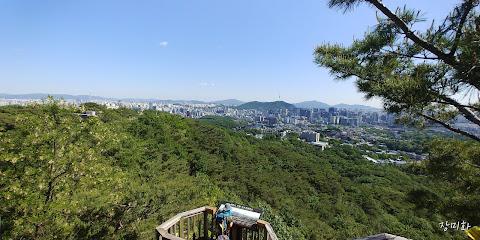
Art Archives-SeMA
1.2 km
Explore the Art Archives-SeMA, a premier destination for contemporary Korean art in the heart of Seoul's cultural landscape.

Hill of Poet Yun Dong-ju
1.2 km
Discover the tranquil beauty and poetic spirit at the Hill of Poet Yun Dong-ju – a must-visit observation deck in Seoul with stunning city views.

Cheong Wa Dae Official Residence
1.2 km
Experience the rich history and breathtaking beauty of Cheong Wa Dae, the official residence of South Korea's President, nestled in Seoul's majestic landscape.

Essential places to dine
PKM Garden Restaurant & Cafe
1.6 km
Experience the essence of Italy in Seoul at PKM Garden Restaurant & Cafe - where delightful flavors meet serene surroundings.

The Restaurant
2.0 km
Experience the perfect fusion of Haute French and Italian cuisine at The Restaurant in Seoul's Jongno District.

Dugahun
2.4 km
Experience authentic Italian flavors at Dugahun in Jongno District, Seoul – where culinary excellence meets vibrant atmosphere.

Sejong Village Food Street
2.4 km
Discover the rich flavors of Korea at Sejong Village Food Street – a culinary haven in the heart of Seoul's historic Jongno District.

Korean Folk Village
2.7 km
Discover Korea's rich heritage at Korean Folk Village – an open-air museum showcasing traditional life with performances, crafts, and delicious cuisine.
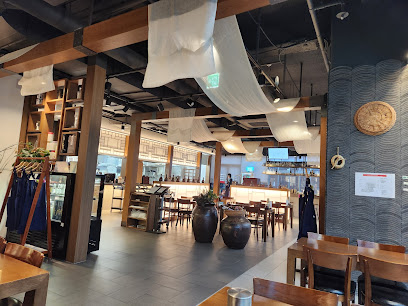
Insadong Geujip
2.7 km
Experience authentic Korean flavors at Insadong Geujip - where tradition meets culinary excellence in Seoul's historic district.

Ha-Yeon Korean Cuisine Restaurant
2.7 km
Savor authentic Korean traditional full-course meals at Ha-Yeon in Jongno-gu, where every dish tells a story.

Doma Insadong
2.8 km
Discover authentic Korean flavors at Doma Insadong in Seoul's historic Insadong district – a perfect blend of tradition and taste.

Sanchon
2.8 km
Discover authentic Korean vegetarian cuisine at Sanchon in Seoul's historic Insadong district—an unforgettable dining experience steeped in tradition.

Korean Restaurant Doore
2.9 km
Experience the essence of traditional Korean dining at Doore - where every dish tells a story.

PyeongYang Gogitjip
2.9 km
Experience authentic Korean BBQ at PyeongYang Gogitjip in Jongno District, where flavors meet tradition in every grilled bite.

Insadong gukbap
2.9 km
Experience authentic Korean gukbap at Insadong Gukbap in Seoul - where tradition meets flavor in every bowl.

Hanuso
3.0 km
Experience authentic Korean cuisine at Hanuso in Insadong, where tradition meets modern dining in an unforgettable culinary journey.

Yangbandaek
3.0 km
Experience authentic Korean flavors at Yangbandaek in Jongno District, where traditional cuisine meets warm hospitality.

Tteulag
3.0 km
Discover Tteulag: A Culinary Haven in Seoul's Insadong District Offering Authentic Korean Flavors and Warm Hospitality.

Markets, malls and hidden boutiques
MSK SHOP / Cafe Coin (Manado disk Shop)
2.0 km
Explore the essence of Korean fashion at MSK SHOP / Cafe Coin, where unique styles and exceptional quality meet in the heart of Seoul.

Object
2.2 km
Explore a charming souvenir store in Jongno District, Seoul, offering unique gifts and local crafts that reflect Korea's rich culture and heritage.

YG Place Insa Branch
2.7 km
Explore the vibrant world of K-pop at YG Place Insa Branch, Seoul's premier music store, offering exclusive merchandise and a taste of Korean music culture.

세령 (Korean HandMade Highclass Traditional Accessory)
2.7 km
Discover 세령: Your Destination for Exquisite Handmade Traditional Accessories in Seoul, Celebrating Korean Artistry and Culture.

Ssamziegil
2.7 km
Explore the artistic heart of Seoul at Ssamziegil, where traditional crafts meet modern shopping in a vibrant cultural hub.

Moony Gongbang Music Box (무늬공방 도자기 오르골)
2.8 km
Discover the magic of handcrafted music boxes at Moony Gongbang in Seoul's Jongno District, where melodies and memories intertwine beautifully.

Kukje Embroidery
2.8 km
Discover the artistry of Korean embroidery at Kukje Embroidery, a unique gift shop in the heart of Seoul's Insa-dong district.

Insadong Vintage
2.9 km
Explore the rich tapestry of fashion history at Insadong Vintage, where each unique piece brings a story from the past to your wardrobe.

Insadong Bells and Wind Chimes Shop
2.9 km
Explore the enchanting Insadong Bells and Wind Chimes Shop in Seoul, a treasure trove of handcrafted gifts that capture the spirit of Korean culture.

Yeon
2.9 km
Discover Yeon, a charming gift shop in Seoul, offering unique handmade products that reflect Korea's rich cultural heritage.

Korean National Souvenir Center
2.9 km
Explore the Korean National Souvenir Center for unique handcrafted gifts and authentic cultural experiences in the heart of Seoul.

Etro Boutique
3.0 km
Discover the elegance of Italian fashion with unique prints and luxurious fabrics at Etro Boutique in Seoul, a must-visit for style enthusiasts.

Korea Traditional Souvenir Center
3.1 km
Explore authentic Korean culture at the Korea Traditional Souvenir Center, home to unique handcrafted treasures and traditional memorabilia.

인사1길
3.1 km
Explore the charm of Korean craftsmanship at Insa1-gil, a unique home goods store in Seoul's historic Insa-dong district.

AEOL SSIGU MADANG
3.1 km
Explore vintage treasures at AEOL SSIGU MADANG in the heart of Seoul's Insa-dong, where retro fashion meets a vibrant cultural scene.

Essential bars & hidden hideouts
Bar Pomme
2.2 km
Discover the exquisite cocktails and vibrant atmosphere at Bar Pomme, a must-visit cocktail bar in Seoul's Jongno District.

Bar Cham
2.2 km
Experience the art of mixology at Bar Cham, a cozy cocktail bar in Seoul's Jongno District, offering unique drinks and a warm ambiance.

Cobbler
2.6 km
Experience the art of mixology at Cobbler, a premier cocktail bar in Seoul's Jongno District, where creativity and flavor intertwine.

Tender Bar
2.6 km
Experience Seoul's nightlife at Tender Bar, a cocktail haven offering expertly crafted drinks and a vibrant atmosphere in Jongno District.

Ikseon bar Orb of Light Cocktail & Wine bar
2.8 km
Experience the exquisite blend of cocktails and wines at Seoul's enchanting Ikseon bar Orb of Light, a hidden gem in the heart of the city.
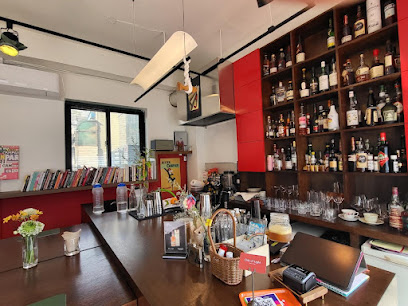
Tongkeun Imo
3.0 km
Discover the lively essence of Seoul's nightlife at Tongkeun Imo, a cozy bar in Insa-dong offering unique local drinks and a welcoming atmosphere.
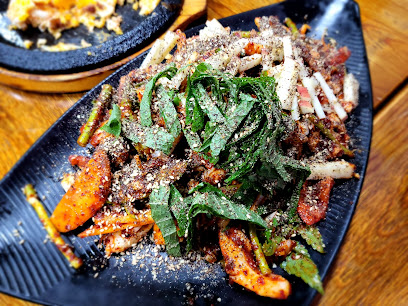
Seochon Dokkaebi
3.0 km
Discover Seochon Dokkaebi, a vibrant bar in Seoul that blends traditional Korean culture with modern nightlife, perfect for an unforgettable experience.

Insadong Nogari
3.0 km
Experience the vibrant nightlife of Seoul at Insadong Nogari, a traditional bar offering delicious drinks and a welcoming atmosphere in the heart of Insadong.

Tou
3.1 km
Experience the authentic taste of Korea at Tou, a Korean rice wine pub in Jongno District, where culture and flavor come alive.

찰스 H Charles H.
3.1 km
Discover the perfect blend of elegance and modernity at Charles H. in Seoul, a sophisticated bar and dining experience.

마당쇠호프
3.1 km
Discover the local charm of Seoul at 마당쇠호프, a popular bar in Insa-dong offering delicious drinks and a vibrant social atmosphere.

OB's Cabin
3.1 km
Experience the vibrant nightlife of Seoul at OB's Cabin, a live music bar where local talent shines in an intimate setting.

Haejeo
3.1 km
Discover Haejeo, a unique bar in Insa-dong, Seoul, where traditional culture meets modern mixology for an unforgettable experience.

Jongnoilbeonzi
3.1 km
Discover the vibrant nightlife of Jongnoilbeonzi, a perfect bar to unwind in the heart of Seoul's cultural district, Insa-dong.

레벤호프
3.2 km
Immerse yourself in Seoul's nightlife at 레벤호프, where traditional charm meets modern mixology in the heart of Insa-dong.




